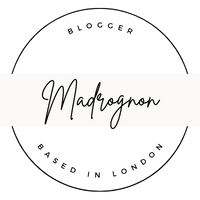Can you imagine a city without illuminated advertising? Imagine if at night it became dark, lit only by a few street lamps and cars, with no theatres, supermarkets, or restaurants shining; the streets dark, the buildings uniformly grey. The city would appear literally deserted. And perhaps it would be without light. Light signifies life. Where it’s dark, people prefer not to linger, except perhaps for sleep. However, light attracts. For many years, illuminated advertising has brought light to cities at night, providing orientation and transforming cities into spaces where life continues after dark.
The Beginnings of Illuminated Advertising People engaged in trade, selling goods and wanting to attract customers, have always tried to advertise. Whether in a simple manner as market criers or through information leaflets – people have tried to draw attention to their goods. Particularly in cities, various advertising mediums have developed. For a long time, for example, advertising columns were considered one of the most important advertising spaces in urban areas. Additionally, so-called “nose signs” shaped the facades of shops and inns. They were called “nose” because they stood out from the wall and protruded into the air. The typical brass pretzels at traditional bakeries or the boot in front of a cobbler’s shop are at least familiar to many of us from films. Outdoor advertising experienced a revolution with the introduction of illuminated advertising.
Various sources dispute when and where the first illuminated advertisement was installed in Germany. It was possibly in 1896 at Berlin’s Spittelmarkt for Malton wine. The first light advertising systems did not yet shine in colourful neon but were made of conventional light bulbs. At the time, this was a significant change and often involved a lot of effort. Thousands of small light bulbs and many kilometres of connecting cables were installed to advertise with illuminated signs. However, the development of illuminated advertising was repeatedly slowed down. During the First World War, it was banned for energy policy reasons. In the following Golden Twenties, it experienced a resurgence, only to be banned again during the Second World War due to blackout measures.
The Breakthrough of Illuminated Advertising With the end of the Second World War and the economic miracle of the 1950s, illuminated advertising left its dark times behind and experienced a breakthrough in Germany. Bright neon signs in bright, strong colours symbolised the spirit of new beginnings that overcame people after years of war and deprivation. Light advertising celebrated life and invited people into restaurants, cinemas, and shops. Greiner Advertising Technology also entered the business of illuminated advertising during this important phase. Since then, the industry has been constantly marked by changes, but hardly anyone thinks of banning this defining element of modern cities.
Illuminated Advertising in the Future Today, there is virtually nothing in advertising that doesn’t exist. Large illuminated boards are digitally controlled, changing their design by the minute, SMS campaigns send advertising directly to private mobile phones, and on social networks, we receive advertising suggestions based on our personal buying behaviour. Despite all these developments, no one is dismantling their illuminated advertising. Attractive outdoor advertising remains an essential part of a good advertising strategy. And with the right design and in the right light, illuminated advertising will continue to attract people in the future and bring life to cities.




